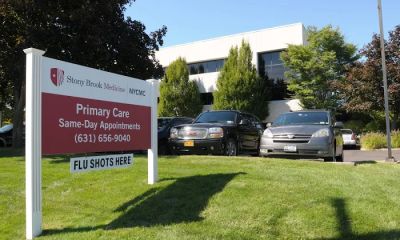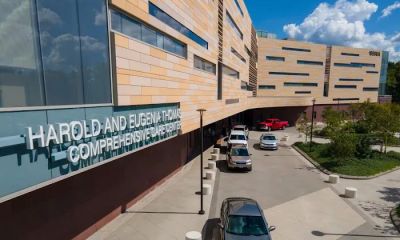Understanding Atrial Fibrillation and Its Treatment
Atrial fibrillation (AFib) is one of the most common heart rhythm disorders, affecting millions of people around the world. For many, understanding AFib and its treatment options can help in managing the condition effectively, ultimately improving quality of life and heart health. As a condition that disrupts the normal electrical signals in the heart, AFib can cause the heart to beat irregularly and sometimes rapidly, which can lead to complications like stroke, heart failure, and other heart-related issues. In this article, we’ll dive deep into what atrial fibrillation is, the causes behind it, its symptoms, and the most current and effective treatments available. If you or a loved one has been diagnosed with AFib, it’s important to understand how the heart works in the context of this disorder and how to take proactive steps for better management.

1. What is Atrial Fibrillation?
Atrial fibrillation is an abnormal heart rhythm that originates in the atria—the upper chambers of the heart. Under normal circumstances, electrical impulses travel in an organized manner to help the heart beat in a coordinated rhythm. In individuals with AFib, these electrical impulses become erratic, leading to a fast and irregular heartbeat. As a result, the heart’s ability to pump blood efficiently can be compromised.
There are several forms of atrial fibrillation, including:
- Paroxysmal AFib: This form comes and goes, typically lasting for a few minutes to hours.
- Persistent AFib: It doesn’t go away on its own and needs medical intervention.
- Long-standing Persistent AFib: This type persists for more than a year.
- Permanent AFib: This is when the abnormal rhythm is persistent and can’t be corrected.
2. Causes and Risk Factors for Atrial Fibrillation
Understanding the causes and risk factors of atrial fibrillation can help you prevent or better manage the condition. Some of the common causes of AFib include:
- Heart Disease: Conditions like coronary artery disease, heart valve issues, and heart failure can increase the risk of AFib.
- High Blood Pressure: Chronic hypertension can lead to changes in the heart's structure and function, which may trigger AFib.
- Age: Older adults are more likely to experience AFib, though it can affect younger individuals as well.
- Sleep Apnea: Undiagnosed or untreated sleep apnea can contribute to AFib.
- Alcohol Consumption: Excessive drinking, especially binge drinking, can trigger AFib episodes.
3. Symptoms of Atrial Fibrillation
Symptoms of atrial fibrillation can vary from person to person, and some individuals may not experience any symptoms at all. However, the most common symptoms include:
- Palpitations: A racing or irregular heartbeat that may feel like your heart is fluttering or pounding.
- Fatigue: Many people with AFib experience tiredness or a lack of energy, which can impact daily activities.
- Dizziness or Lightheadedness: Due to the irregular blood flow, you might feel faint or dizzy.
- Shortness of Breath: AFib can reduce the efficiency of the heart’s pumping, making it difficult to breathe deeply.
- Chest Pain: Some people with AFib report experiencing chest discomfort, which should be taken seriously as it may signal other underlying issues.
4. Treatment Options for Atrial Fibrillation
There are several treatment options available for managing atrial fibrillation, ranging from medications to surgical interventions. The goal of treatment is to control the heart rate, restore a normal rhythm if possible, and reduce the risk of stroke. The most common treatment options include:
TriHealth Heart & Vascular Institute - Thomas Comprehensive Care Center
thomas comprehensive care center
10506A Montgomery Rd Ste 200, Montgomery, OH 45242, USA

Medications
Medications are often the first line of defense in treating AFib. The two main categories of drugs are:
- Rate Control Medications: These medications, such as beta-blockers or calcium channel blockers, help slow down the heart rate and manage symptoms.
- Rhythm Control Medications: Antiarrhythmic drugs may be used to restore a normal heart rhythm.
- Anticoagulants: Blood thinners like warfarin or newer agents like dabigatran help reduce the risk of stroke caused by blood clots forming in the atria.
Cardioversion
If medications do not restore a normal rhythm, electrical cardioversion may be recommended. This procedure uses electric shocks to reset the heart’s rhythm to a normal pattern.
Ablation Therapy
In some cases, an ablation procedure may be necessary. This involves the use of radiofrequency energy to destroy the tissue in the heart that is causing the irregular electrical signals.
Surgical Options
For individuals with long-standing persistent AFib that cannot be managed with other treatments, surgery may be recommended. A common surgery for AFib is the maze procedure, which involves creating a series of small scars in the heart tissue to reroute the electrical impulses and restore a normal rhythm.
5. Lifestyle Changes and Prevention
While treatments are important, lifestyle changes can also play a significant role in managing atrial fibrillation and preventing future episodes. Some key lifestyle modifications include:
- Regular Exercise: Moderate exercise can help strengthen the heart and improve overall cardiovascular health.
- Healthy Diet: A diet rich in fruits, vegetables, whole grains, and lean proteins can help reduce blood pressure and support heart health.
- Stress Management: Practices like yoga, meditation, and relaxation techniques can help reduce stress, which can trigger AFib.
- Limiting Alcohol and Caffeine: Both alcohol and caffeine can contribute to AFib episodes, so limiting intake is important.
- Smoking Cessation: Smoking can worsen heart disease, so quitting is essential for overall heart health.
By incorporating these lifestyle changes and following your healthcare provider’s treatment plan, you can better manage atrial fibrillation and reduce the risk of complications.





















New York Comprehensive Medical Care
new york comprehensive medical care
732 Smithtown Bypass #200, Smithtown, NY 11787, USA